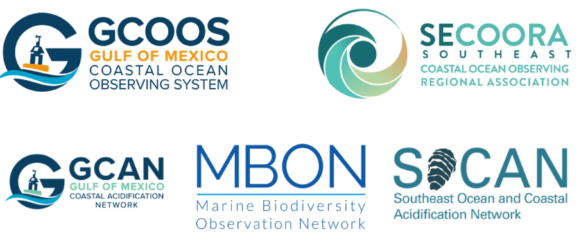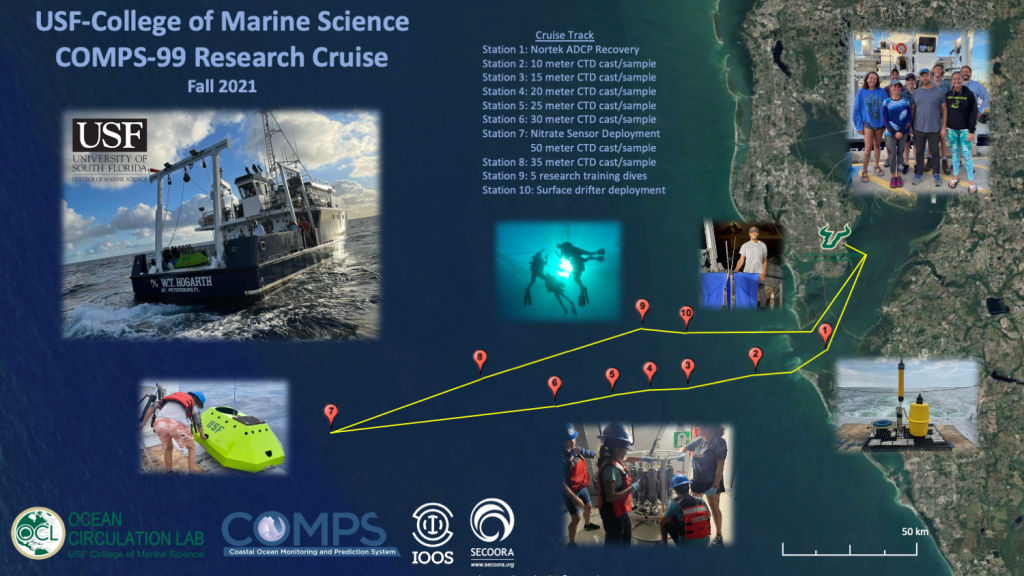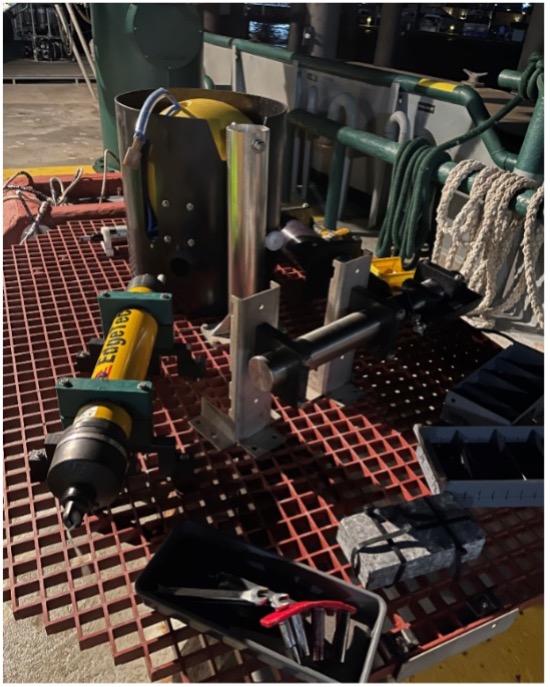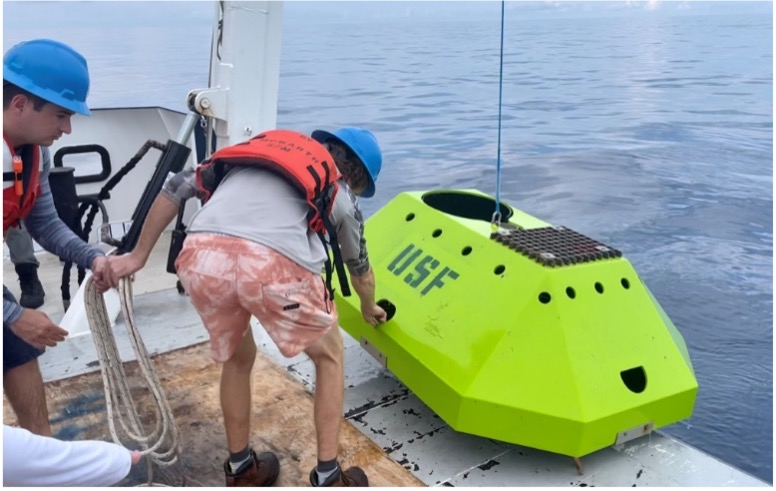The University of South Florida College of Marine Science’s Ocean Circulation Lab (USF CMS OCL) executed a 3-day mooring and dive training cruise in the Gulf of Mexico aboard the Florida Institute of Oceanography’s R/V Hogarth. The cruise plan included the deployment and recovery of sensors used in circulation studies related to Harmful Algal Blooms (HABs) as well as numerous training dives for new student research divers.
USF CMS OCL is headed by physical oceanographer Dr. Robert Weisberg, and the lab studies ocean circulation and its ecological impacts in the Gulf through direct observations and models. As part of SECOORA and OCL, USF Coastal Ocean Monitoring and Prediction System (COMPS) maintains a number of moored stations on the West Florida Shelf. The OCL uses data collected by COMPS buoys and bottom mounted sensors to validate and inform their numerical circulation models.
During the cruise, which took place October 25-27, scientists took nutrient and Red Tide (Karina brevis) water samples from 10 locations, conducted 7 CTD (Conductivity, Temperature, and Depth) sensor casts, and deployed bottom mounted sensor packages. The team also deployed one surface drifter for circulation model verification. Five research training dives, including night dives, were completed so that new scientific divers are trained and ready to work in the field.
The sensors are collecting data to measure nutrients and currents in a region where Red Tide commonly blooms. Researchers are investigating the links between mid-shelf K. brevis bloom generation and nutrients of deep-water origin brought onto the shelf by upwelling circulation.
This research cruise, conducted during rough weather, was made successful due to the exceptional teamwork and commitment of the professional research staff, cruise staff, graduate students and undergraduate students.
Related news

GCOOS - SECOORA Joint Webinar Series: Building Synergy Across the US MBON & Ocean Acidification Networks
The GCOOS - SECOORA Webinar Series aims to strengthen collaborations across the Marine Biodiversity Observation Network (MBON) and regional Ocean Acidification Networks (GCAN and SOCAN).

New High Frequency Radar at the Dry Tortugas National Park Improves Ocean Surface Current Measurements Across the Straits of Florida
A new CODAR Low-Power SeaSonde HFR has been deployed by the University of South Florida at Fort Jefferson on Garden Key to measure surface currents to improve understanding and prediction of the Gulf of Mexico Loop Current.

President Biden Proposes Significant Budget Cuts to IOOS for 2025
President Biden’s recent 2025 budget proposal slashed the funding allocated for the Integrated Ocean Observing System (IOOS) by 76%, which would effectively shut down coastal and ocean observing efforts.


